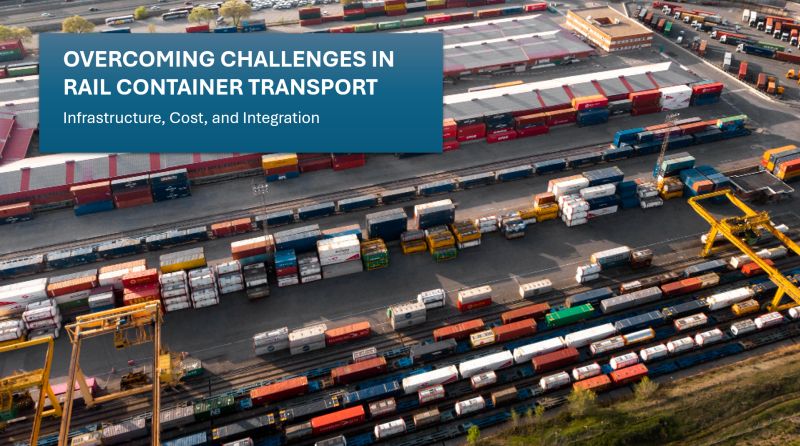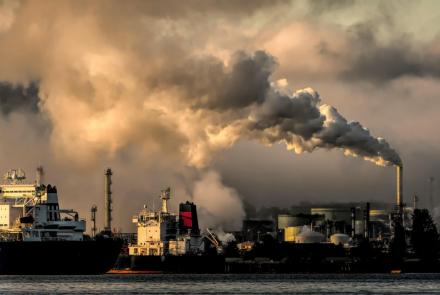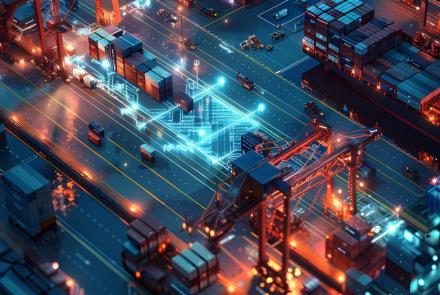Overcoming Challenges in Rail Container Transport: Infrastructure, Cost, and Integration

Rail container transport is a reliable and sustainable option for moving cargo over long distances. However, despite its many benefits, the industry faces several challenges. From infrastructure issues and rising costs to the complexities of integrating multi-modal transport systems, overcoming these hurdles is critical for ensuring the seamless movement of goods. In this blog, we’ll delve into the key challenges of rail container transport and explore how the industry is navigating them.
1. Infrastructure Limitations in Rail Transport
One of the primary challenges of rail container transport is the lack of adequate infrastructure in certain regions. While rail networks are extensive in some countries, many areas still suffer from underdeveloped or aging rail lines, limited terminal capacity, and insufficient intermodal facilities. This results in delays, increased transit times, and inefficiencies in the overall transport process.
Key Solutions:
- Upgrading Rail Networks: Governments and private operators are investing heavily in modernizing rail infrastructure to accommodate larger freight volumes and ensure seamless connectivity between key industrial hubs.
- Smart Terminals: The development of smart terminals with advanced tracking systems and optimized cargo handling capabilities can help streamline operations and reduce bottlenecks.
2. High Initial Investment Costs
Although rail transport is known for its cost efficiency in the long run, the initial investment required for developing and maintaining rail infrastructure can be prohibitively expensive. From building tracks and terminals to acquiring specialized rail containers, the costs add up, especially for companies entering the rail transport space for the first time.
Key Solutions:
- Public-Private Partnerships (PPP): Governments are increasingly collaborating with private businesses to share the costs of rail infrastructure development. This can reduce the financial burden on individual companies while expanding the availability of rail transport.
- Container Leasing Options: Businesses looking to reduce upfront costs are turning to container leasing services, allowing them to access high-quality containers without the need for significant capital investments. VS&B Containers offers a wide range of container leasing solutions that help companies optimize their transport strategies.
3. Multi-Modal Integration
Seamless integration between rail, road, and sea transport is vital for the success of containerized transport. However, multi-modal logistics face several challenges, including delays at transfer points, inconsistent regulations between transport modes, and a lack of standardized handling equipment across transport hubs.
Key Solutions:
- Improving Intermodal Facilities: To address these integration challenges, transport companies and logistics operators are investing in improved intermodal hubs that facilitate faster and more efficient cargo transfers between road, rail, and sea transport.
- Standardization: Developing global standards for containers and handling equipment can enhance the fluidity of multi-modal operations and reduce delays. Initiatives like ISO container standards ensure that containers can be easily transferred between modes without requiring modifications.
4. Regulatory and Administrative Barriers
Rail transport is subject to a host of regulations that vary across countries and regions. This results in administrative delays as different jurisdictions have their own policies regarding safety standards, customs procedures, and freight handling. Furthermore, international rail transport may require crossing multiple borders, adding to the complexity of regulatory compliance.
Key Solutions:
- Streamlined Regulatory Processes: Governments are working together to create more unified regulatory frameworks that facilitate smoother cross-border rail transport.
- Digital Platforms for Documentation: Digitalization is proving to be a game-changer in overcoming regulatory barriers. The use of digital documentation, blockchain technology, and real-time tracking systems allows companies to reduce administrative burdens and improve the accuracy of compliance processes.
5. Container Availability and Fleet Management
A challenge faced by many companies is the availability of containers for rail transport. As global demand for containers increases, especially in peak seasons, businesses may struggle to secure enough containers to meet their needs. Poor fleet management can further exacerbate this issue, leading to delays and higher operational costs.
Key Solutions:
- Advanced Fleet Management Systems: Many companies are now turning to digital fleet management systems to track container movements in real time and ensure that assets are allocated where they are needed most.
- Leasing Services: Leasing containers is another effective way for businesses to scale their operations without overextending their budgets. At VS&B Containers, we offer a range of rail-ready containers to meet the evolving needs of logistics operators.
6. Environmental and Sustainability Concerns
While rail transport is generally considered more environmentally friendly than road transport, there are still sustainability challenges to consider. The construction of rail infrastructure, the energy consumption of diesel-powered locomotives, and the potential environmental impact of expanding rail networks are factors that need to be addressed.
Key Solutions:
- Electrification of Rail Networks: The transition from diesel to electric trains is underway in many parts of the world, reducing the environmental impact of rail transport.
- Green Logistics Initiatives: Many logistics providers are integrating green practices into their operations, such as reducing energy consumption, using more efficient containers, and adopting renewable energy sources for terminal operations.
The Future of Rail Container Transport
As rail container transport continues to grow in importance, it is critical for companies to address the infrastructure, cost, and integration challenges that come with it. By embracing technology, fostering partnerships, and prioritizing sustainability, the rail transport industry can overcome these hurdles and emerge as a key player in the future of global logistics.
At VS&B Containers, we are committed to supporting the evolving needs of businesses with our wide selection of containers, including specialized rail containers designed for efficiency, durability, and sustainability. Whether you're looking to purchase or lease, we provide end-to-end solutions that help you overcome the challenges of rail container transport.
VS&B Containers group offers both standard and custom-made containers, delivered directly from the factory to your desired location. With a fleet of over 30,000 containers made available across Europe and Asia, the company helps customers get containers effortlessly from anywhere in the world. If you have unique needs in terms of affordability, adaptability, and potential return on investment, please drop an email to traders@vsnb.com, and the VS&B team will contact you to discuss further.
- Log in to post comments






